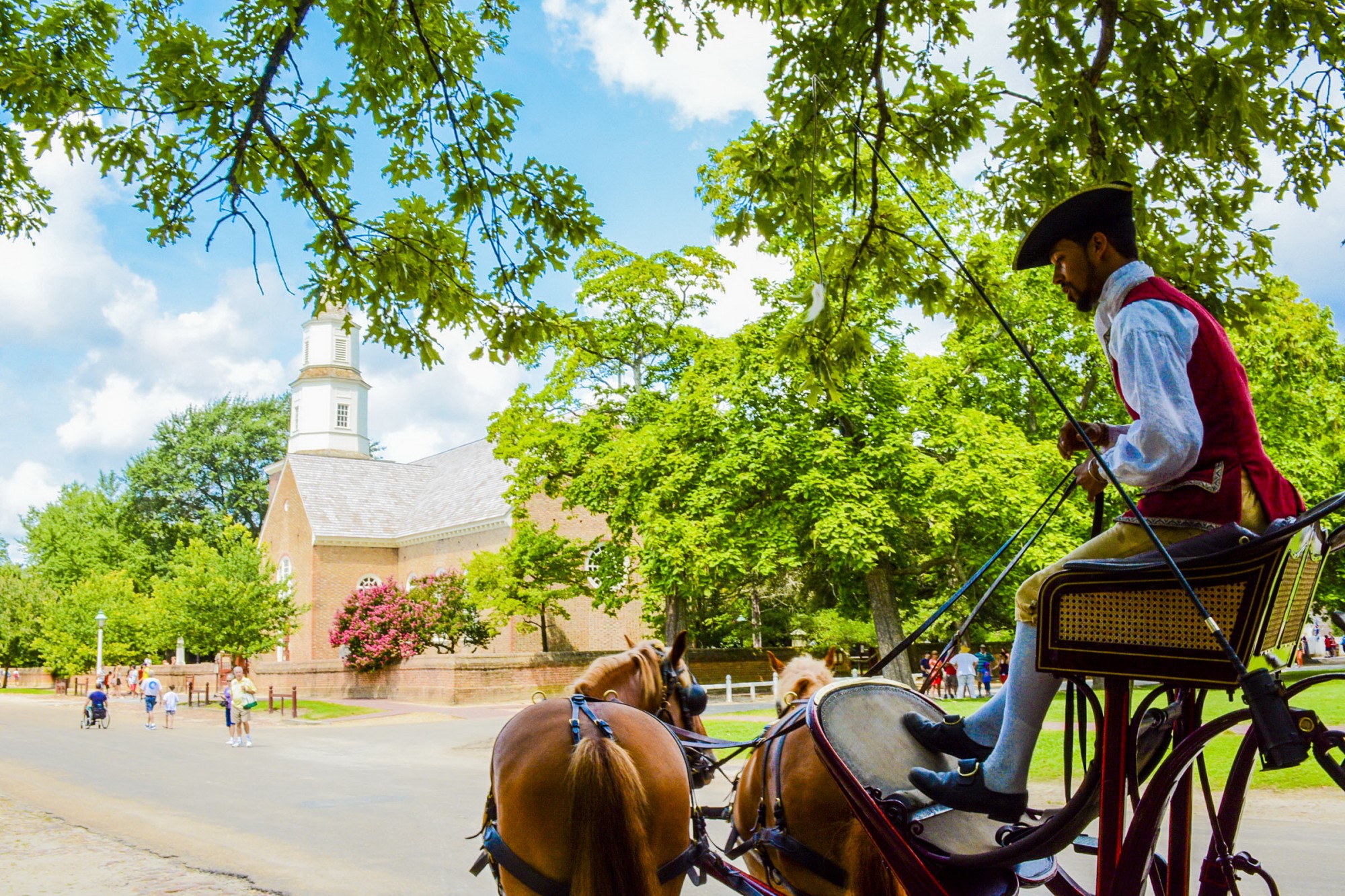Virginia.org recently published a list of nine must-see landmarks in Virginia, one of them being right in Williamsburg! The beautiful thing about Virginia is that you don't have to drive far to find some amazing places to visit. If you are looking to add to your bucket list, check out this list of "bucket list worthy" destinations:
1. Monticello was the home of Thomas Jefferson, author of the Declaration of Independence and the third president of the United States. Jefferson began construction of Monticello in 1769, but was known to redesign and remodel. One large, final remodeling effort began in 1796 and was completed in 1809.
In 1987 Monticello was recognized as a UNESCO World Heritage Site at the same time the Great Wall of China, the Acropolis in Athens, the city of Venice and its lagoon, and the Roman City of Bath in the United Kingdom were also tapped. That’s quite a distinguished list, and Monticello is the only home in America to be recognized as such.
2. Colonial Williamsburg was the Capital of Virginia from 1699 to 1780. The 301 acres include 88 original 18th-century structures, and hundreds of reconstructed houses, shops and public outbuildings that stand on their original foundations. Wherever you venture in this historic district, you’ll be greeted by costumed interpreters depicting life at the edge of Revolution.
3. Mount Vernon was the plantation home of George Washington, the first president of the United States. Considered the most popular historic estate in America, Mount Vernon is comprised of the main mansion, more than a dozen original structures, a working blacksmith shop, and more across nearly 50 acres.
4. Appomattox Court House National Historical Park is the site of Lee’s surrender to Grant to end the American Civil War in April 1865. In 1930 Congress passed a bill to provide a monument at the site of the old Appomattox courthouse. The monument was never built, but the buildings of the village were either restored or reconstructed. Of note is the actual surrender site, the McLean House, and Clover Hill Tavern, the oldest structure within the park.
5. More than 200,000 veterans and their dependents are interred at Arlington National Cemetery, a site of more than 612 acres. Every conflict in which the United States has fought is represented by those laid to rest. Memorial sites include the Tomb of the Unknowns and the eternal flame at the grave site of John F. Kennedy.
6. The Virginia State Capitol was designed by Thomas Jefferson and first occupied in 1788 by Virginia’s General Assembly, America’s oldest English-speaking legislature. It is the first American State Capitol designed after the Revolutionary War and the first public building in the New World to be constructed in the form of a classic Roman temple. Free one-hour guided tours are offered daily or visitors may also tour on their own.
7. The aptly named Humpback Bridge in Covington is the oldest of Virginia’s surviving covered bridges, and is a rare example of an arched bridge. It was built in 1857 and spans 100 feet. Traffic has not traveled over it since a steel replacement bridge was constructed upstream in 1929.
8. A natural rock arch, the Natural Bridge serves as a witness to history. It was surveyed by a young, pre-presidential George Washington, and was later owned by Thomas Jefferson. It served as a shot tower during the Revolutionary War, and ammunition was manufactured for both the War of 1812 and the Civil War up the trail from the bridge at Saltpeter Cave and Lost River. Prior to any of that history, however, is Monacan Indian lore that includes the bridge appearing as an escape route when an enemy tribe was in pursuit.
9. Skyline Drive is a Virginia treasure spanning 105 miles through Shenandoah National Park until it meets the Blue Ridge Parkway. Travelers of the drive can expect to see plenty of wildlife – as many as 200 species, in fact, including black bear, deer, fox, and raccoon.



